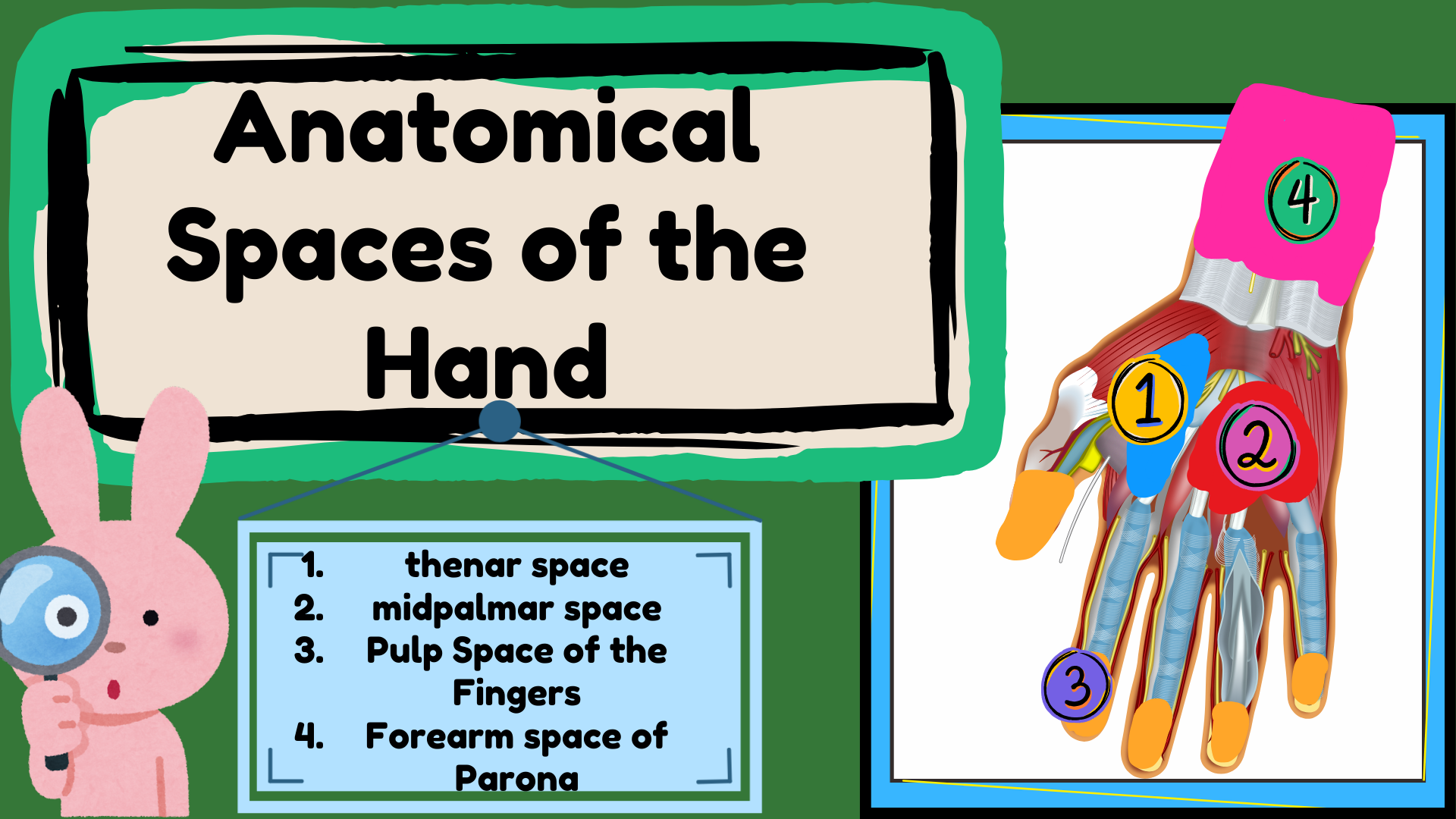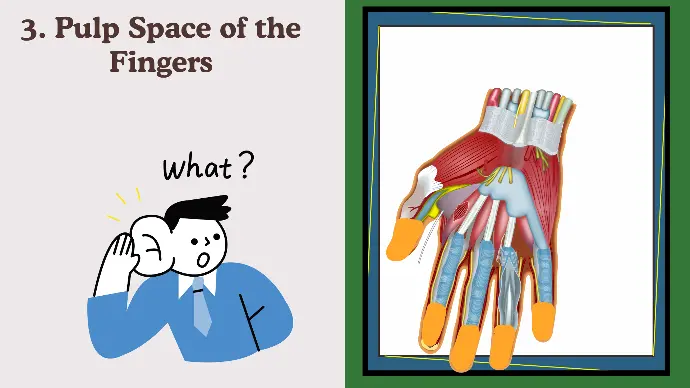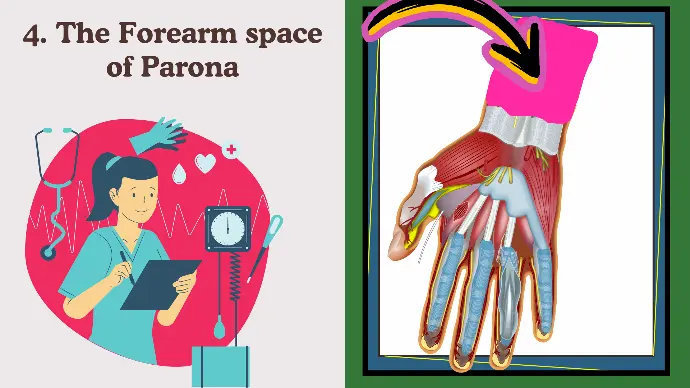Anatomical Spaces of the Hand
The hand contains several anatomical spaces that are important for the passage of tendons, nerves, and blood vessels.
The main spaces in the hand include
- the thenar space,
- midpalmar space,
- Pulp Space of the Fingers
- The Forearm space of Parona
Each space has distinct boundaries and contents that are critical for hand function.

1. Thenar Space
Location: Located deep to the thenar muscles, lateral to the adductor pollicis muscle.
Boundaries:
Proximal: flexor retinaculum.
Distal: Proximal transverse palmar crease.
Contents: Contains the flexor pollicis longus tendon and the branches of the median nerve.

2. Midpalmar Space
Location: Located beneath the central part of the palmar aponeurosis.
Boundaries:
Proximal: Forearm space of Parona.
Distal: Fascial sheaths of 3rd and 4th lumbricals.
Contents: Contains the flexor tendons of the fingers (flexor digitorum superficialis and flexor digitorum profundus), lumbrical muscles, and the branches of the ulnar nerve.

3. Pulp Space of the Fingers
Location: it is found on the tips of fingers and thumb.
Structure: it consists of subcutaneous fat, that is fixed and arranged in tiny compartments by fibrous septae passing down from skin to periosteum of terminal phalanx.
Infection of Pulp space: infection of this space is known as Whitlow. It occludes the blood vessels of the terminal phalanx, leading to necrosis of phalanx. It is relieved by making a lateral incision to open the pulp space and save the phalanx.

4. The Forearm space of Parona
Location: it is a rectangular space, found in the lower part of the forearm. Just above the wrist.
Boundaries:
- Proximal: Origin of flexor digitorum superficialis.
- Distal: flexor retinaculum. And then, it communicates with mid palmar space.
